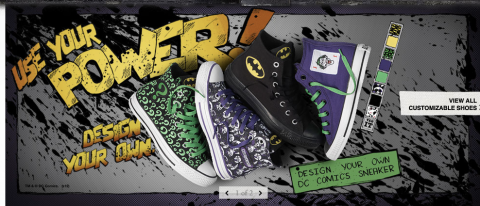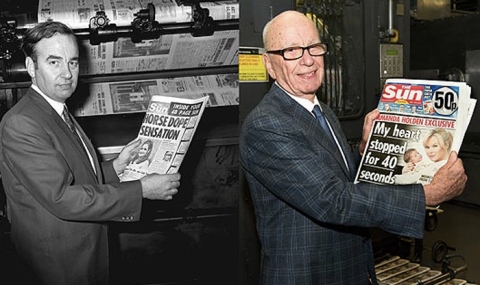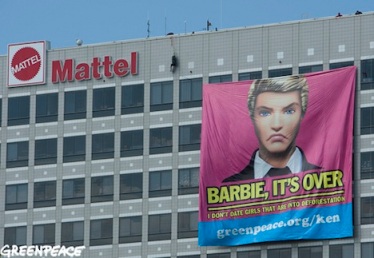Case study: Superga vs Converse
June 30, 2012 § Leave a comment
Mythic Superga were forgotten deep down in our wardrobe since Alexa Chung appeared on scene. It seems that everything she touches becomes shiny gold. In fact, Superga is now the hottest choice for this season. What has happened with Converse then?
Well, Alexa Chung seems the best choice when it comes to brand ambassadors. Nowadays she is the “it girl”, a fashion icon trusted by press and fashion addicts, who has a great power of influence all over the fashion industry. And this is something really important to consider. While Superga is trying to appeal ELLE and VOGUE readers, Converse is driving to a narrower niche with Dazed & Confused.
With her election, Supega is trying to appeal a more fashionable market: professional men and women, who value elegance, sobriety and style when it comes to choose confortable footwear.
Converse instead is now tapping into underground music and art, targeting urban tribes who look to reaffirm their identity through an exclusive pair of shoes.
In their website, Converse offers different ideas to inspire the creation of your own and only pair of shoes. Among other strategies, they have teamed up with Dazed & Confused to support the Converse Dazed 2012 emerging artist award and they have chosen skateboarding ambassador Raymond Molinar to promote the newly redesigned Sea Star LS.
On the other hand, Superga has pushed a celebrity endorsement strategy that has brought their brand up to be the top choice for this season. Celebrities such as Katy Holmes, Fearne Cotton, Kelly Brook, Guy Ritchie, Sienna Miller or Kristen Stewart, are now Superga fans.
From the press section of their website, you can directly buy Superga’s shoes featured in fashion & lifestyle magazines, you just need to choose your size. In addition to this, you can also give yourself a red carpet treatment by buying directly from their celeb section the shoes that “it girls are wearing now”.
Converse has always tried to appeal niche markets but they were once the comfy shoes for fashionable girls too. Now, even though both brands have the same price range and cover exactly the same need, when it comes to choose one or the other, Superga seems to be their answer.
And after all, The Sun shines on Sunday
February 27, 2012 § Leave a comment
“Three cheers for the rising of the Sun on Sunday and for Rupert Murdoch’s undiminished appetite for a fight”
That is how Ian Monk, former executive at The Sun, starts his article regarding the launch of The Sun on Sunday in PR Week and, to be honest, I think it completely defines the whole thing. After all, Rupert Murdoch empire is still out there.
I would say that launching a new edition of The Sun in the middle of a wave of uncertainty, illegal practices, the Leveson Inquiry and a general criticism from the whole press is at least brave. It may look like a joke, perhaps we are just looking at a masterclass of how to fight a corporate crisis.
Although the Sunday issue is covering the place left by News of the World, News International has build a strong communication strategy in order to separate both publications. Their PR set-up has been billing the newspaper as an extension of The Sun, trying to highlight the strength and popularity of the current brand.
PR Week reports that before confidentially launching the Sunday issue, News International displayed an army of trusted PR: Lorna Carmichael, a publicist from The Sun; Helen Prowse, former PR manager for The Sun and the News of the World and now a campaign director at Diffusion PR; Georgina Lipscomb, associate director at Propeller PR, and Raymond Jaffe, a former Sky director and now owner of promotions agency The Promotions Factory, all of them were called in to work on the launch.
News International marketing team has also been working with WPP to manage its advertising across all media platforms and alongside with their PR strategy, the in-house team has also used current journalists as brand advocates to speak in the press about the news paper.
Murdoch has been taking care of this new edition as his new baby and considering the media analysis I would say it really is. He has adopted a female-friendly tone to regain market leadership on Sunday and he has also hold its reduced 50p price point, breaking down the Sunday’s market. Apparently, this is a beautiful treat that he can afford: Media analyst Roy Greenslade says that it will cost him about 20 times less than the News of the World, with Sun journalists on a seven-day rota.
A couple of weeks ago The Sun was on the news because journalists were arrested and only yesterday, they launched an extra issue, selling 3.26 millions copies; the biggest sale of UK newspaper for four years.
I can only say congratulations but, if you don’t mind, I will finish this article with Dan Sabbagh -The Guardian – words: “Don’t write Murdoch off – after all, maybe it will be the UK that disappears first.”
References:
Luker, S., News International calls in trusted PR allies for Sun on Sunday launch, PR Week online, retrieved 27th February, <www.prweek.com>
Ian Monk, Ian Monk: The Sun shines on UK press industry, PR Week online, retrieved 27th February, <www.prweek.com>
Sabbagh, D., The Sun on Sunday has risen – but a new week will bring even more heat, The Guardian online, retrieved 27th February, <www.guardian.co.uk>
Toynbee, P., If the Sun on Sunday soars Rupert Murdoch will also rise again, The Guardian online, retrieved 27th February, <www.guardian.co.uk>
Crisis management: danger and opportunity?
January 29, 2012 § Leave a comment
There are hundreds of academic definitions of Public Relations but in essence we could say that the main role of PR is to manage brand reputation. Reputation influences who we buy from, work for, invest in…it plays both, the emotional and personal attachments that we have with an organisation. It is one of the most important business assets but it is so fragile. Potential threads constantly challenge it and that is basically why crisis management is one of the most important tools of Public Relations.
On the book “Risk Issues and Crisis Management” Michael Regester affirms that threads to reputation can destroy, in hours or days, an image or a brand developed and invested in over decades. That is why this treads need to be anticipated:
Christian Dior’s House tried to send Galliano to rehab so many times but the designer rejected to work on his additions. They knew that they had a silent boom in-house that one-day or another was going to exploit. What they didn’t probably expect was an anti-semitic scandal. In fact, no one could ever expected that his creative director could have said, “ I love Hitler” in the middle of a lovely café in Paris. Even though the designer denied everything at the very beginning, the surfacing of a video showing the real facts, was enough evidence to show that a real crisis was threatening the reputation of the fashion house. During the golden hour, Dior remained in silence. All news papers around the world were echoing the news and the Oscars were about to start. Natalie Portman, one of the most treasured faces of Dior, refused to wear a Galliano dress that night. It was pretty obvious that the house had to stop protecting its designer and move on. To help mitigate the damage to its reputation, the fashion house hired PR crisis firm Kekst and speaking publicly for the first time since the scandal started, Galliano made a statement: “Anti-Semitism and racism have no part in our society. I unreservedly apologise for my behaviour in causing any offence.” In the end, Dior decided to fire him and, this time, the designer went directly to rehab.
Even though the fashion house was living its darkest moment, it had the opportunity to show that no matter what, human value goes first. In an honest statement, Dior finished its contract with the creative designer that had raised its fashion reputation to the top but also threatened to fall to the bottom.
As we have seen, a crisis can threat business’s reputation but if it is managed properly, it can be an opportunity to generate trust. That is why it is equally important to identify potential threats than react consistently when something unexpected happened.
References:
Regester, M., Larkin, J., Risk Issues and Crisis Management, third edition, Chartered Institute of Public Relations, 2005
Allen, P., John Galliano ‘goes into rehab’ and apologises unreservedly – but faces trial, Mail Online, retrieved 29th January 2012,<www.dailymail.co.uk>
Pearcy, A, Dior’s Galliano issues apology as fashion label hires PR firm, Regan’s PR Daily, retrieved 29th January 2012, <www.prdaily.com>












